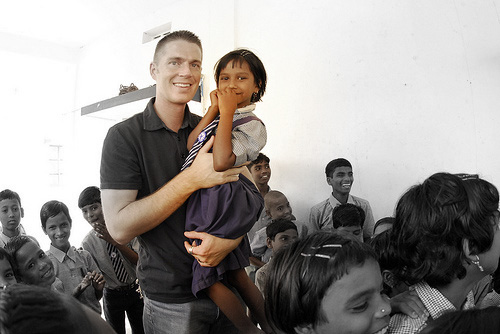The Educational Crisis
In the Indian culture there are people who are deemed more valuable than others. Some of the ones who end up on the “short end of the stick” live in the villages of rural India. In fact, some within this society are viewed as “untouchable”, those not worthy of many basic human dignities. As such, the “untouchables” are often not afforded the opportunity of an education.
The following are several examples taken from various articles and studies completed on the state of
education in India:
“Historically, Indian education has been elitist. Traditional Hindu education was tailored to the needs of Brahman (see Glossary) boys who were taught to read and write by a Brahman teacher (see The Roots of Indian Religion, ch. 3). During Mughal rule (1526-1858), Muslim education was similarly elitist, although its orientation reflected economic factors rather than those of caste background. Under British company and crown rule (1757-1947), official education policies reinforced the preexisting elitist tendencies of South Asian education. By tying entrance and advancement in government service to academic education, colonial rule contributed to the legacy of an education system geared to preserving the position and prerogatives of the more privileged. Education served as a “gatekeeper,” permitting an avenue of upward mobility to those few able to muster sufficient resources.”

James Heitzman and Robert L. Worden, editors. India: A Country Study. Washington: GPO for the Library of Congress, 1995, Under the Heading of “Geography and Demographics”, Under the Sub-heading of “Education”
• Over 90 million Indian children in the age group 6 to 14 are out of school
• Over 68% of all boys and 73% of all girls drop out of school before class 10 (Class 10 is the last year in the Indian school system)
• Over 34% of India’s adult population does not know how to read or write
• Almost a third of the entire non-literate adult population in the world lives in India
Source: MHRD estimates, Census 2001, Human Development Report
Extracts from the Infrastructure section of “ PROBE” Survey. The PROBE (Public Report on Basic Education) Survey was carried out in the late 90’s as an assessment of education in India.
“Buildings soon deteriorate when the roof leaks – as the monsoons in our country are so generous. It disrupts schooling activity. Both teachers and parents complained bitterly about the state of the school building during the monsoons, when teaching activity was often disrupted, sometimes for weeks, or even months at a time.”
“The Children huddle in two rooms, on sacking brought from home. The second room is very dark.”
“The playground is full of muck and slime. The overflowing drains could easily drown a small child. Mosquitoes are swarming.”
“There is no toilet. Neighbors complain of children using any convenient place to relieve themselves, and teachers complain of neighbors using the playground as a toilet in the morning.”
“In spite of various efforts over the decades, India’s educational structure could not eradicate the problems of illiteracy and even now, there is a need for such missions that can arouse awareness about the importance of education among the masses. Even after more than 60 years of independence, we find ourselves unable to achieve our decided objectives due to various reasons. Lack of awareness and an obsolete mentality about the system has resulted in poor growth of education amongst masses. Nevertheless, we have highly reputed IITs and IIMs (highly reputable educational institutes) in our country but at the same time, a majority of children in rural areas are devoid of a formal education.”
From an article titled, Case Study: 3 Challenges of Indian Education System by Poonam Arora of the Udaipur Times.com. This article was compiled by a team from Udaipur Times.com on June 22, 2011 It can be found at http://udaipurtimes.com/case-study-3-challenges-of-indian-education-system/
From the previous statistics and articles, anyone can see that most children in rural India have little to no shot at an education. AIM4India wants to change this! An education can change the direction of many impoverished village children’s lives. Without an education, these children will have little to no hope of a future with real options. An education opens up many opportunities for these children. With your help, AIM4India can provide the education necessary so that the children of rural India can have lives of opportunity. Rather than being “untouchables”, AIM4India sees these children as invaluable and worth the investment because God Himself sees them this way.
